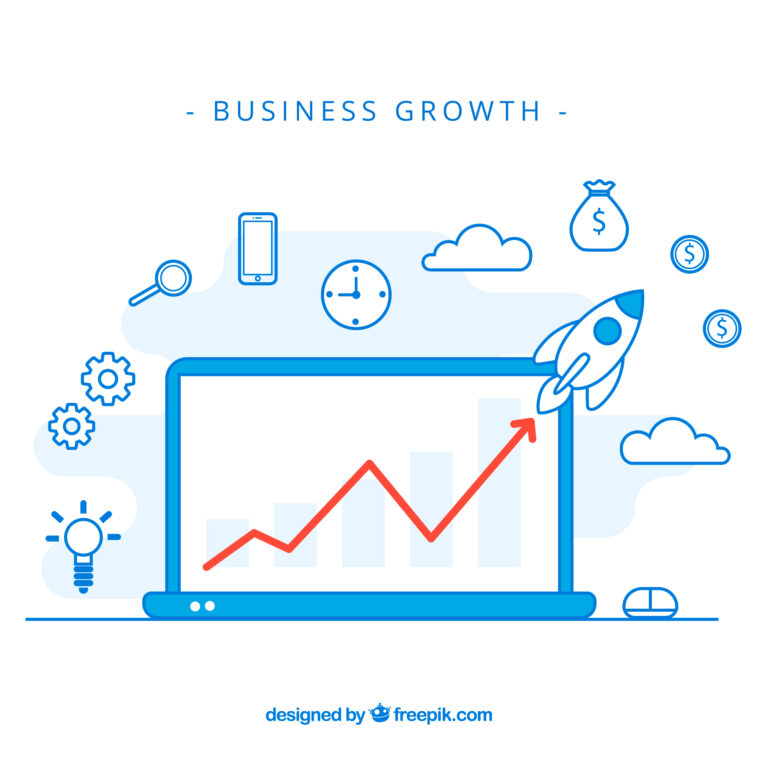Growing a business is an exciting yet challenging journey that requires strategic planning, flexibility, and a keen understanding of market trends. Whether you’re a startup looking to establish your presence or an established business aiming to scale, focusing on sustainable growth is crucial for long-term success. In this guide, we’ll explore the key strategies, approaches, and tools that can help fuel your business growth in 2024 and beyond.
1. Understanding the Importance of Sustainable Growth
Sustainable business growth isn’t about rapid, short-term gains. Instead, it involves expanding in a way that is manageable, profitable, and resilient. Sustainable growth allows businesses to adapt to market changes, weather economic downturns, and remain competitive. To achieve this, it’s essential to balance ambition with practical steps that focus on long-term value creation and stability.
2. Identifying Your Growth Goals
Every business has unique growth goals, so identifying what growth means to your organization is essential. Do you want to increase revenue, expand into new markets, or launch new products? Clear, measurable objectives are vital in designing effective growth strategies.
- Revenue Growth: Increasing sales through customer acquisition, pricing adjustments, or new revenue streams.
- Market Expansion: Expanding into new geographic areas or customer segments.
- Product Development: Introducing new products or services to attract and retain customers.
- Operational Efficiency: Streamlining processes to reduce costs and improve profitability.
3. Strategies for Achieving Business Growth
Below are some proven strategies for business growth that can help you achieve your objectives effectively:
3.1 Market Penetration
Market penetration involves increasing your share in existing markets. This can be achieved by attracting new customers or encouraging existing customers to buy more frequently.
- Enhance Marketing Efforts: Use targeted advertising, social media, and SEO to reach more potential customers.
- Offer Promotions or Discounts: Special offers can incentivize repeat purchases and attract new buyers.
- Improve Customer Retention: Loyal customers are essential to sustainable growth. Focus on excellent customer service, loyalty programs, and personalized experiences to keep them engaged.
3.2 Market Development
Market development involves entering new markets with existing products. This can be a powerful way to scale your business and reach more customers without developing new products.
- Expand Geographically: Consider expanding your business to other regions or countries where there is demand for your product or service.
- Identify New Customer Segments: Target new demographics or industries that may benefit from your offerings.
- Form Strategic Partnerships: Collaborate with companies that have access to your target market to increase visibility and reach.
3.3 Product Development
Creating new products or services allows you to attract new customers and retain existing ones by diversifying your offerings.
- Conduct Market Research: Regularly survey customers and study market trends to identify product gaps and opportunities.
- Invest in Innovation: Allocate resources to R&D to develop products that address customer pain points and differentiate your brand.
- Leverage Customer Feedback: Customer feedback provides valuable insights into product improvements and new ideas.
3.4 Diversification
Diversification involves entering new markets with new products. While this can be a riskier approach, it offers significant growth potential if done strategically.
- Analyze Related Markets: Identify markets that align with your core strengths but offer new opportunities.
- Consider Acquisitions: Acquiring or merging with a business in a related field can help diversify your offerings and add valuable resources.
- Launch Complementary Products: Offering products that complement your main offerings can attract new customers and increase revenue per customer.
4. Leveraging Digital Marketing for Business Growth
Digital marketing is a critical component of growth strategies, offering powerful tools to reach a wide audience and track engagement. Here are some key digital marketing tactics to consider:
4.1 Content Marketing
Content marketing helps you attract, engage, and retain customers by providing valuable information that resonates with their interests and needs.
- Blogging and Articles: Regularly publish informative content that addresses customer pain points and positions you as an industry expert.
- Social Media Content: Use social platforms to share updates, engage with your audience, and build a loyal community.
- Email Newsletters: Keep customers informed about new products, promotions, and company news through regular emails.
4.2 Search Engine Optimization (SEO)
SEO is essential for improving your website’s visibility in search engine results, helping potential customers find you organically.
- Optimize Keywords: Target relevant keywords that your audience is searching for to improve rankings.
- On-Page Optimization: Ensure your website is user-friendly and mobile-responsive, with clear navigation and fast loading speeds.
- Backlink Strategy: Build a robust network of backlinks from reputable websites to increase your domain authority.
4.3 Paid Advertising
Paid advertising allows you to reach a targeted audience quickly and effectively. Popular platforms for paid ads include Google Ads, Facebook, and Instagram.
- Pay-Per-Click (PPC) Ads: Advertise on search engines like Google to reach users actively searching for similar products or services.
- Social Media Ads: Use paid ads on social platforms to target specific demographics and increase brand visibility.
- Retargeting Ads: Retarget visitors who have shown interest in your products but haven’t made a purchase, keeping your brand top of mind.
5. Investing in Customer Experience (CX) and Retention
Customer experience and retention are essential for sustainable growth. Happy customers are more likely to make repeat purchases, refer friends, and provide positive reviews.
- Enhance Customer Support: Offer multiple channels for customer support (e.g., phone, chat, email) and ensure timely, helpful responses.
- Personalize the Experience: Personalization makes customers feel valued. Use data insights to offer personalized product recommendations, emails, and special offers.
- Encourage Feedback and Act on It: Regularly gather customer feedback through surveys and reviews, and use it to improve your products, services, and overall experience.
6. Building a Scalable Infrastructure
A solid infrastructure is essential for handling growth effectively. Invest in tools and processes that support scalability and efficiency across all business functions.
- Automation: Use automation tools for repetitive tasks such as email marketing, lead generation, and customer support to free up time for strategic initiatives.
- Cloud-Based Systems: Cloud software enables your team to work from anywhere and helps you scale resources quickly as needed.
- Project Management Tools: Tools like Asana, Trello, and Monday.com help teams stay organized and ensure tasks are completed efficiently.
7. Expanding Your Team Strategically
To grow your business, you’ll need a team that can adapt to new challenges and drive innovation. Focus on hiring individuals who bring unique skills and perspectives that align with your growth goals.
- Hire for Growth Roles: Consider adding roles like marketing specialists, customer success managers, or data analysts to support expansion efforts.
- Invest in Employee Development: Upskill your team by offering training and development opportunities, making them better equipped to handle evolving responsibilities.
- Encourage a Growth Mindset: Foster a culture of innovation and continuous improvement by encouraging team members to share ideas and take calculated risks.
Conclusion: Driving Business Growth with a Balanced Approach
Achieving sustainable business growth is a multifaceted process that requires a balance of strategy, innovation, and careful planning. By setting clear goals, leveraging digital marketing, enhancing customer experience, and building a solid infrastructure, you can position your business for long-term success. Remember that growth isn’t a one-size-fits-all journey—experiment with different strategies, track your progress, and remain adaptable to change. With persistence and the right approach, your business can thrive in today’s competitive landscape.
Frequently Asked Questions (FAQs)
How long does it take to see results from growth strategies?
It depends on the strategy and your specific goals. Some strategies, like digital marketing, can yield quick results, while others, like market expansion, may take months or even years to see substantial returns.
What is the most important factor for sustainable business growth?
Customer satisfaction is one of the most critical factors. Satisfied customers lead to repeat business, positive reviews, and word-of-mouth referrals, all of which drive sustainable growth.
How can small businesses compete with larger companies in terms of growth?
Focus on personalized service, niche markets, and digital marketing. Small businesses often have an advantage in delivering a personal touch and can be more agile in adapting to customer needs.
Is it better to focus on acquiring new customers or retaining existing ones?
A balance is essential, but retaining existing customers is generally more cost-effective than acquiring new ones. Happy customers are likely to refer others, so focus on retention alongside customer acquisition.
What are some common challenges in business growth?
Common challenges include cash flow issues, increased operational complexity, difficulty maintaining quality, and adapting to new market demands. Having a strategic plan and scalable processes can help overcome these challenges.
Business growth is a journey with plenty of challenges, but with a strategic approach, you can build a robust foundation for long-term success. Embrace the process, learn from setbacks, and keep pushing forward to reach your growth goals.


